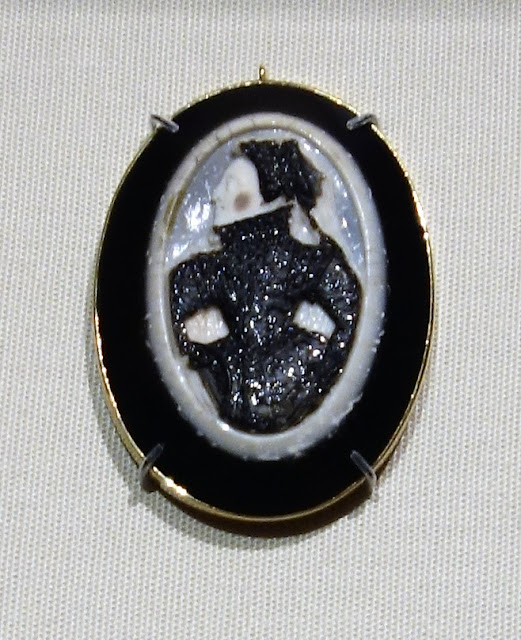Here are some more items from the exhibit on the Tudors at the Cleveland Museum of Art...
Henry VIII had a collection of around 2500 tapestries in his various palaces. This one is part of a series of ten which tells the Biblical story of David and Bathsheba.
A terracotta bust of John Fisher, the Bishop of Rochester. He was beheaded by Henry VIII for criticizing the King's divorce from Catherine of Aragon and his marriage to Anne Boleyn.
Field armor of the 3rd Earl of Cumberland. Among its engraved decorations are back-to-back E's, the symbol of Elizabeth I.
The image of Queen Elizabeth on a jeweled portrait locket made of enameled gold encrusted with diamonds and rubies.
A miniature portrait of Sir Thomas More, who was beheaded by Henry VIII for not supporting the King's divorce and break from the Catholic Church.
There are no undisputed portraits of Henry VIII's ill-fated second wife Anne Boleyn. However, this sketch by Hans Holbein the Younger might be of her.
Henry VIII's only son, Edward, ascended the throne upon Henry's death. Edward VI was only nine years old when he became King, but he died at the age of fifteen.
A portrait by Hans Holbein the Younger of Jane Seymour, the third wife of Henry VIII. Jane gave the King the son that he had longed for, but, within days after the childbirth, she died at the age of 28.
Hercule-Francois, the Duke of Alencon, was involved for over a decade in marriage negotiations with Elizabeth I and sent her this portrait of himself. Needless to say, the negotiations never led to marriage.
In this portrait Queen Elizabeth is holding a sieve. It is an allusion to a Roman legend of a woman who proved her virginity by carrying water in a sieve.
"The Triumph of Hercules" is another tapestry from Henry VIII's vast collection.
This is a portrait of the first Moroccan ambassador to the English court. In 1600 the sultan of Morocco tried to form an alliance with Elizabeth against Spain. The ambassador's six month stay in London created a fascination with North Africa... one result being Shakespeare's drama "Othello".
An engraved sardonyx cameo portraying Queen Elizabeth.
This portrait, although painted late in her reign, shows Elizabeth as a young woman of almost mythological powers. She holds a rainbow. The serpent on her sleeve is a symbol of wisdom. Her cloak is decorated with eyes and ears, implying that she was all-seeing and all-hearing.
This excellent exhibit is at the Cleveland Museum of Art through May14th.




.JPG)











No comments:
Post a Comment